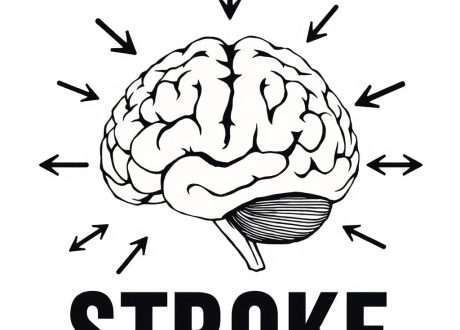Anew study builds on evidence that body mass index (BMI) alone does not fully capture risk of death, particularly for a US population that is increasingly obese and racially diverse.
Associations between BMI and mortality have been inconsistent in the past, with some studies showing elevated risk and others finding lower risk for adults who are overweight, the study’s authors wrote in PLOS ONE. And most studies to date have used data from the 1960s through 1990s that predominantly include non-Hispanic White men and women.
To offer additional insight, Aayush Visaria, MD, MPH, analyzed recent health survey data from 1999 through 2018 to extrapolate BMI and found that although being obese was associated with an increased mortality risk, being a healthy weight or overweight had almost no effect on a person’s risk of dying.
“Especially in the overweight range, BMI doesn’t differentiate mortality risk, so I think it’s important to include other measures of adiposity to try to better risk stratify people,” Visaria, of Rutgers Institute of Health in New Jersey, said in an interview with JAMA. He coauthored the study with Soko Setoguchi, MD, DrPH, of Rutgers Robert Wood Johnson Medical School.
The role of BMI as a stand-alone metric for obesity gained new attention in June when the American Medical Association, which publishes JAMA, urged physicians not to use it singularly to assess healthy weight.
The new analysis only examined all-cause mortality, not the association between BMI and risk of cardiovascular disease or diabetes. These diseases, along with hypertension, are the leading causes of premature death in the US, and it is well-established that elevated BMI contributes to these conditions, the authors noted in their study.
Parsing the Numbers
Visaria’s interest in helping people at risk of cardiometabolic diseases started 9 years ago as an undergraduate at Rutgers University. He founded an organization, now called the American Preventive Screening & Education Association, that has trained 1300 undergraduate, graduate, and medical students to provide free blood pressure and diabetes screening throughout New Jersey. In addition to earning his degrees in public health and medicine at Rutgers, Visaria completed a postdoctoral fellowship, during which he spent time working on the current study.
He and Setoguchi retrospectively analyzed health data for roughly 554 000 US residents, including nearly 200 000 Asian, non-Hispanic Black, Hispanic, multiracial, and Native American adults. A majority of participants, 69%, were non-Hispanic White adults. Participants were, on average, 46 years old, with equal numbers of men and women.
Data came from the National Health Interview Survey, which asks US households a range of questions, including self-reported height and weight, which the authors used to calculate BMI. BMI is calculated by dividing weight in kilograms by height in meters squared.
Over a median follow-up of 9 years, 75 807 people died. Risk of death remained about the same for adults whose BMI ranged from 22.5 to 29.9. But mortality risk jumped significantly for adults with a BMI of 30 or higher—considered obese or severely obese—and adults with a BMI lower than 18.5, considered underweight.
Examining risk by age group, Visaria said he was surprised to find that among people aged 65 years or older, mortality risk was similar for those who were a healthy weight, overweight, or obese with a BMI up to 34.9. Among younger adults, the risk of death increased significantly for those with a BMI above 27.5.
“It points out that BMI is not everything, as some groups can have good survival at higher BMIs. Also, very low BMIs, especially in the underweight, are usually associated with high mortality, and very high BMIs over 35 are as well,” Carl J. Lavie, MD, medical director of cardiac rehabilitation and prevention at the John Ochsner Heart and Vascular Institute, wrote in an email to JAMA. He was not involved in the PLOS ONE study.
Francisco Lopez-Jimenez, MD, MBA, chair of the division of preventive cardiology and director of the cardiometabolic program at the Mayo Clinic, noted in an interview with JAMA that Hispanic adults who were overweight had a higher risk of death than non-Hispanic White and Black adults who also were overweight. Lopez-Jimenez was not involved in the study.
“For Hispanics, there is some risk [of death] that starts going up when BMI is 27 or 28, something that you don’t see in the whole cohort or in Whites in particular,” Lopez-Jimenez said. One possible reason for this, he said, is that Hispanic people have a tendency to develop central obesity, which is associated with higher all-cause mortality risk.
A limitation of the study, Jimenez-Lopez and Lavie agreed, is its reliance on self-reported weight and height measurements to calculate BMI. Research has shown that people tend to misreport their own height and weight in national surveys.
Other analyses have also found that people who fall into the overweight BMI category may not have an increased risk of all-cause death. A 2013 meta-analysis in JAMA of nearly 100 studies that included both self-reported and measured weight and height found that overweight BMI was associated with lower all-cause mortality.
Different large studies, however, including analyses published in 2010 and 2016, have found the opposite to be true. In those studies, people with overweight BMI had an increased risk of death from all causes.
Lavie said he would like to see further study in large populations with other actual measurements such as waist circumference, muscular strength, and cardiorespiratory fitness. Measured fitness is perhaps one of the strongest predictors of risk of death, particularly from cardiovascular disease, he added.
John A. Batsis, MD, wrote in an email to JAMA that one major element not considered in the study are changes in body composition that occur with aging. Batsis is an associate professor of medicine at the University of North Carolina at Chapel Hill and was not involved in the study.
“BMI does not capture differences in age-related loss of muscle mass, strength, or function (termed sarcopenia) and does not differentiate between persons with central adiposity or adipose deposition in other tissues,” he said. “This type of deposition is what is likely a culprit of the adverse effects of obesity.”
Think Phenotype, Not Just BMI
“To me, as a cardiologist, this study underscores the importance of using alternative measures of fat like waist circumference or waist-to-hip ratio,” in addition to BMI, Lopez-Jimenez said. These other measurements are relatively easy and inexpensive to take during patient examinations, he added.
Waist circumference is strongly associated with all-cause and cardiovascular mortality, with and without adjustment for BMI, according to a 2020 consensus statement by the International Atherosclerosis Society and International Chair on Cardiometabolic Risk Working Group on Visceral Obesity.
Batsis added that besides simple, office-based measures like waist circumference or waist-hip ratio clinicians can use specific scales that measure body fat or fat-free mass and muscle strength.
“It is really that we need to be thinking of ‘phenotypes’ of persons—for instance, we know that older adults with both obesity and sarcopenia are at risk for greater adverse outcomes than either alone. So not all ‘obesity’ is the same and it may be that specific individuals with specific characteristics are treated differently.”
Extra pounds aren’t the only issue, either. Lopez-Jimenez and Lavie noted that risk of death increased among adults in the underweight category. It’s a tricky finding to communicate amid the current obesity epidemic, Lopez-Jimenez said, but clinicians and patients should consider it when discussing weight. A low BMI can signal underlying conditions such as cancer, depression, and other diseases.
“We need to move away from BMI or use it in conjunction with other measures—it is not the gold standard,” Batsis said.












